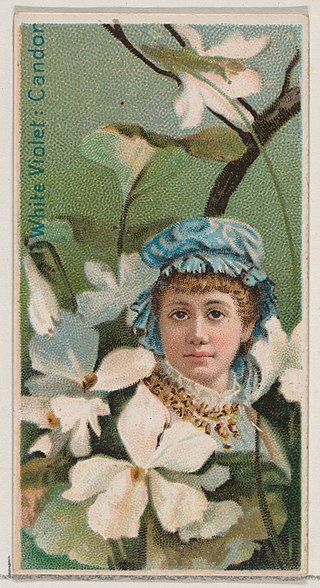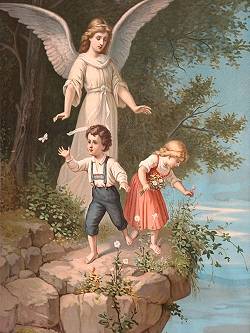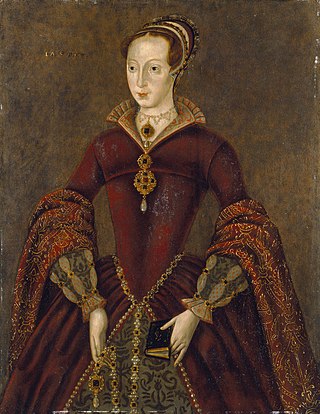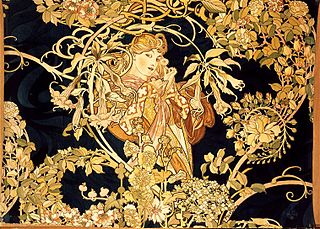Amy is an English feminine given name, the English version of the French Aimée, which means beloved. It was used as a diminutive of the Latin name Amata, a name derived from the passive participle of amare, “to love”. The name has been in use in the Anglosphere since the Middle Ages. It was among the 50 most popular names for girls in England between 1538 and 1700. It was popularized in the 19th century in the Anglosphere by a character in Sir Walter Scott's 1821 novel Kenilworth, which was based on the story of Amy Robsart. Enslaved Black women in the United States prior to the American Civil War were more likely to bear the name than white American women because slave masters often chose their names from literary sources. The name declined in use after 1880 but was revived due to the hit song Once in Love with Amy from the 1948 Broadway musical Where's Charley?. The name peaked in usage in the United States between 1973 and 1976, when it was among the five most popular names for American girls. It remained among the top 250 names for American girls in the early 2020s.
Vanessa is a feminine given name.
Mabel is an English female name derived from the Latin amabilis, "lovable, dear".

Samantha is a feminine given name.

Renée is a French feminine given name and surname.

Audrey is a feminine given name. It is rarely a masculine given name. Audrey is the Anglo-Norman form of the Anglo-Saxon name Æðelþryð, composed of the elements æðel "noble" and þryð "strength". The Anglo-Norman form of the name was applied to Saint Audrey, also known by the historical form of her name as Saint Æthelthryth. The same name also survived into the modern period in its Anglo-Saxon form, as Etheldred, e.g. Etheldred Benett (1776–1845).

Sarah is a common feminine given name of Hebrew origin. It derives its popularity from the biblical matriarch Sarah, the wife of Abraham and a major figure in the Abrahamic religions. It is a consistently popular given name across Europe, North America, and the Middle East — being commonly used as a female first name by Jews, Muslims, and Christians alike, and remaining popular also among non-religious members of cultures influenced by these religions.
Karen is a given name and occasional surname. In English, it is a feminine given name derived from the name Katherine, and it is also found in modern Africa, as well as in East Asia. However, in other countries such as Iran and Armenia, it is a masculine name deriving from Middle Iranian.

Violet is a female given name which comes from the eponymous flower. As with other such names, its popularity has varied dramatically over time. Flower names were commonly used from about 1880 through about 1910 in the United States, with usage dropping throughout the next 80 years or so; Violet was the 88th most frequent girls' given name in 1900, dropping below position 1000 by 1960. In 1990, the name appeared again in the top 1000 at position 289 and subsequently increased in popularity. It was the 20th most used name for newborn American girls in 2022. It rose rapidly in popularity for American girls born that year, one of several fashionable names that contain a letter v.
Julie is a popular Latin first name which originally comes from the Latin Julia, itself derived from the Latin Julius, which is believed to either stem from Ancient Greek: ἴουλος, romanized: íoulos, lit. 'downy-haired' or Latin: Iovilius, lit. 'devoted to Jove'. It can be a pet form of Julia, Yulie, or Juliette.
Cassie is a feminine given name and a short form of various other given names Cassandra, Cassandro, and Cassidy mostly used in English-speaking countries. It is more rarely a surname. People and fictional characters named Cassie include:

Angela is a female given name. It is derived from the Greek word ángelos (ἄγγελος), meaning angel from Greek mythology. In the United States, the name "Angela" was at its most popular between 1965 and 1979, when it was ranked among the top 10 names for girls. Between 1922 and 2021, in the United States, the name was ranked in the top 35 names for girls.

Jennifer, also spelled Jenifer or Jenefer, is a feminine given name, the Cornish form of Guinevere, that became popular in the English-speaking world in the 20th century.

Emily is a feminine given name derived from the Roman family name "Aemilius", and is the feminine form of the name Emil.

Jane is a feminine given name. It is the English form of Jehanne, the Old French feminine form of Iohannes, a Latin form of the Greek name Ἰωάννης (Iōannēs), which is ultimately derived from the Hebrew name יוֹחָנָן (Yochanan), a short form of the name יְהוֹחָנָן (Yehochanan), meaning "Yahweh is merciful".

Elizabeth is a feminine given name, a variation of the Hebrew name Elisheva (אֱלִישֶׁבַע), meaning "My God is an oath" or "My God is abundance", as rendered in the Septuagint.

Amber is a feminine given name taken from amber, the fossilized tree resin that is often used in the making of jewelry. The word can also refer to a yellowish-orange color.

Daisy is a feminine given name. The flower name comes from the Old English word dægeseage, meaning "day's eye". The name Daisy is therefore ultimately derived from this source. Daisy is also a nickname for Margaret because Marguerite, the French version of the latter name, is also a French name for the oxeye daisy.
Charlotte is a feminine given name, a female form of the male name Charles. It is of French or Italian origin, meaning "free man" or "petite". It dates back to at least the 14th century. Other variants of the name and related names include Charlie, Lottie, Lotte, Karlotta, Carlota, and Carlotta.
Sally is an English language feminine given name that originated as a hypocorism for Sarah. Young children often have difficulty in pronouncing the letter r, which resulted in nicknames like Sally that substitute the letter r for l. Other examples include Dolly for Dorothy, Hallie for Harriet, Lolly for Laura, and Molly or Polly for Mary. Sally and spelling variant Sallie have also been in use as independent names since the 1700s. The name was popularized by cultural influences in the early 20th century, including the popular Broadway musical Sally, which debuted in 1920. Actress Marilyn Miller played Sally on stage and a 1929 film. An earlier film featured Colleen Moore in the role of Sally. The popularity of performer Sally Rand also increased usage of Sally in the Anglosphere in the 1920s and 1930s. In the United States, the name was among the top 100 names for American girls until 1956. It reached the peak of its popularity in 1939, when it was the 52nd most popular names for American girls. It then declined in use, but had a brief increase in use in the late 1970s due to the influence of the American actress Sally Field. It is also a nickname for Salome and Salimeh, which are especially popular in the Eurasian country Georgia.














